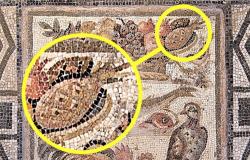Soon the people of Palermo will be able to enjoy not only a corner of paradise but one of the most interesting and beautiful historical places in all of Italy. What we know about the works
The Maredolce park, a natural oasis in Palermo, on the slopes of Mount Grifone, is being reborn. Restoration work has officially resumed and is expected to be completed by the end of the year.
Soon the people of Palermo will be able to enjoy not only a corner of paradise but one of the most interesting and beautiful historical places in all of Italy.
A spring surrounded by greenery, the oldest in Palermo, which probably saw its birth in the Arab period at the end of the 20th century. Inside the well-known Maredolce castle, erroneously recognized as such: it was born as a ribāṭ, or a barracks-monastery, but was transformed into a palace under the Ja’Far dynasty.
Inside the park the Arabs also brought innovative cultivation systems. Under the Ja’Far the palace begins to gather the sum of culture, including scientists, philosophers, poets and mathematicians, who enjoy this beauty.
A true corner of paradise from which the artists of the time drew inspiration. “Wonderful abode where God bestowed perfect beauty!”, he sang Abd al-Rahman of Butera speaking of Sicily, an island subsequently taken from the Arabs.
Adv
The Normans arrive, uncovering and destroying all the monuments of Maredolce. In 1130 the Kingdom of Sicily was established and Maredolce became the country villa of Roger II.
The palace underwent a strong change, resulting in a perfect mix between the new Norman style and the old Arab style, which survived thanks to the surviving ruins. Furthermore, during the empire of Roger II, one of the largest hydraulic engineering works in Europe was built within the Favara park.
On the orders of the king, an artificial lake was designed and built around the palace, which due to its large size takes the name of Maredolce. Used for pleasure and entertainment by the king and his court, the lake it is also exploited for fishing.
Given the closed perimeter of the hydraulic structure, to prevent the water from leaking, a qanat is built, thanks to which the water flows out. Excess fluid is not thrown away, but rather stored for use in places such as the hospital.
In the years to come, in 1328 the site became a hospital at the hands of the Teutonic friars of Magione and a century later an agricultural company under the guidance of Francesco Agraz, Duke of Castelluccio. Only in 1992 did the Sicilian Region acquire ownership.
Although the restoration works suffered several interruptions, they have recently been resumed, thanks to the great desire to return a work of such cultural caliber to its citizens.
The interventions they were in fact born from the need to restore dignity to a historic site which for too many years has been in a strong condition of dirt and degradation. A project that can no longer be postponed.
“We’re at a good point. The company in question has resumed work just over a week ago. The park will be very beautiful. New trees will be planted to replace the ones already removed. There will be a new lighting system and part of the artificial lake will be filled with water”, declares Domenico Ortolano, president of the Maredolce castle and park association.
Work is also underway on restoration of the palace, so that the atrium can be made usable as it once was. Furthermore, a staircase will be positioned in the part of the palace where Roger II’s rooms were located at the time, so that visitors can climb onto the terraces of the palace and admire the beauty of the park from above.
The restoration was financed by resources from the 2014-2020 Development and Cohesion Fund, for just over one million euros. The Appaltitalia stable consortium of Caltagirone was awarded the contract, together with the consortium company carrying out the works Beton Mix of Licata.
The works will be completed by the end of the year and the park will be opened to the public only once all the interventions have been completed. Only then will the gates probably remain open even in the evening thanks to the new photovoltaic lighting system. The hope is that the site once ready it can also host shows and other cultural initiatives.
Today the park hides a real archaeological mine beneath its soil. Various discoveries made by the experts: among many, a farm dating back to the 3rd/4th century BC and Roman and Arab buildings.
“I hope that archaeological excavations continue. The real treasure it is under Maredolce, the story is still under Maredolce, you just have to scratch the ground to find it”, concludes Domenico Ortolano.
Tags: real treasure Maredolce Park




